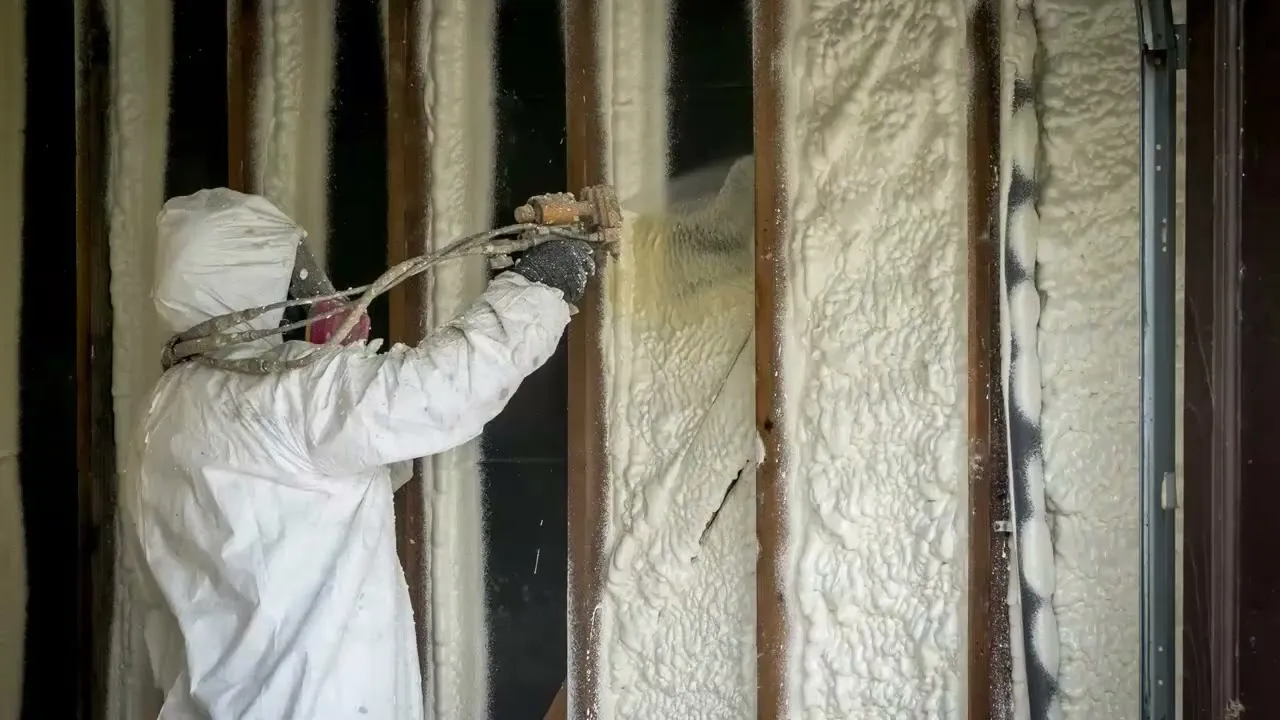
Spray foam insulation is known for its durability and exceptional insulating properties. Whether you’re considering spray foam insulation for your home or already have it installed, it’s natural to wonder: What happens if spray foam gets wet? At Red River Foam Insulation in Oklahoma City, OK, we understand the importance of protecting your investment and ensuring your home stays comfortable and energy-efficient. This comprehensive guide will explore the effects of moisture on spray foam insulation, potential issues, and how to prevent or address them.
Spray foam insulation is a popular choice for homeowners due to its ability to expand on application, filling gaps, cracks, and voids to create a continuous barrier. It comes in two main types:
Open-cell spray foam is more susceptible to water absorption compared to its closed-cell counterpart. If exposed to moisture, it can:
Closed-cell spray foam, on the other hand, is designed to resist moisture:
Understanding how moisture can come into contact with spray foam insulation helps you identify potential issues and prevent damage:
A common cause of moisture exposure is a leak in the roof or walls, allowing water to seep into areas with spray foam insulation. This can lead to long-term damage if the source of the leak isn’t addressed.
Flooding or water intrusion due to heavy rains, burst pipes, or plumbing issues can cause significant water damage to homes and the insulation within them.
High levels of humidity can affect spray foam, especially open-cell foam, which can absorb moisture from the air. Proper ventilation and dehumidification can help manage moisture levels.
Condensation can form when warm, humid air meets a cooler surface, leading to water buildup. This is particularly common in unventilated attics or crawl spaces.
Having your spray foam insulation installed by certified professionals like Red River Foam Insulation ensures that it is applied correctly and with high-quality materials. Proper installation can help minimize the risk of water damage and extend the life of the insulation.
Regularly inspect your home for signs of leaks or damage, especially after severe weather. Addressing issues like a leaking roof or broken pipe as soon as they arise can prevent moisture from coming into contact with your spray foam insulation.
Ensure proper ventilation throughout your home, particularly in areas prone to humidity such as basements, crawl spaces, and attics. Proper airflow helps prevent condensation and reduces the risk of water damage.
In areas that are more susceptible to moisture, consider using a vapor barrier along with your insulation. This can help keep moisture out and prevent water damage.
If you suspect your spray foam insulation has been exposed to water, here’s what you should do:
Locate the source of water or moisture and stop it as soon as possible to prevent further exposure.
For open-cell spray foam that has absorbed water and developed mold, it may be necessary to remove and replace the affected area. Closed-cell foam is more resistant but should still be inspected for potential water infiltration.
Use dehumidifiers and fans to dry out the affected area. Removing excess moisture can help prevent further damage and reduce the risk of mold growth.
If you’re unsure of how to handle water exposure to your spray foam insulation, contact a professional like Red River Foam Insulation. We can assess the extent of the damage and recommend the best course of action.
Spray foam insulation can be an excellent addition to any home, improving energy efficiency, comfort, and air quality. However, it’s essential to understand how it reacts to water and what to do if it gets wet. While closed-cell spray foam is highly resistant to water, open-cell spray foam can absorb moisture and potentially lead to damage if not properly managed.
At Red River Foam Insulation, we prioritize quality installation and customer education to help protect your home and investment. If you have questions or concerns about your spray foam insulation, don’t hesitate to reach out to us for expert advice and professional service.
Contact us today at (405) 281-0800 or email [email protected] for more information or to schedule an appointment. Serving Oklahoma City, OK, and the surrounding areas, we’re here to help you keep your home protected and comfortable.